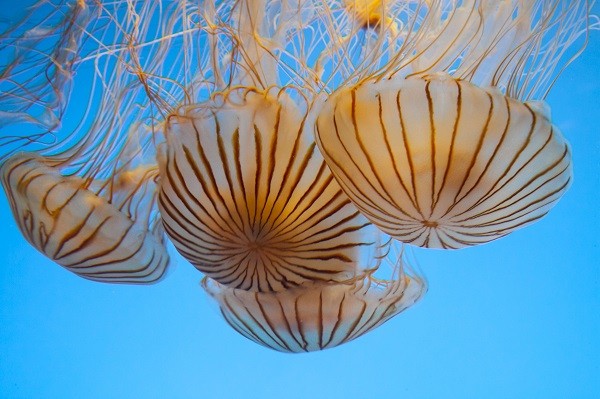One of the deadliest creatures that may be lurking in seawaters could sting so lethal that you will be in a better situation if stung by the enormously lethal black widow spider.
Beware of Cubozoa, or "the brainless" box jellyfish species, that kills people silently, more in quantity than the Sharks do.
The "boxies" does not have a deadly-looking dorsal fin, rows of flesh-biting teeth, or a detailed Discovery program dedicated to their lethal stings, but they can easily kill people. Without creating any buzz in the process.
But, how lethal are they?
Extremely lethal. In fact, the box jellyfish kill and injure more seriously than sharks, sea snakes, and stingrays combined.
What makes them such an avid man-killer?
Unlike other jellies, these creatures can see. They have two dozen eyes, eight of which have lenses, corneas, and irises. They also have a surprisingly complex nervous system, making them able to avoid objects and swim in a fast directional manner.
But, these dangerous sea-creatures are different in one more lethal way. They do not just stop and wait for their prey like their cousins. They hunt actively.
The warning; then?
"Most visitors come to Hawaii, completely unaware they might be stung with the most deadly toxin in the world," says Suzanne Hammer, M.D., a Honolulu physician who on mapping outbreaks and educating the public about this deadly species.
Over 8 million tourists pour into Hawaii each year, some 600,000 in April alone. The Florida Keys and Puerto Rico each have 3 millions, and Northern Coast of Australia attract 27 million, according to Men's Health.
All of these populations are in risk of the deadly stings. The tourists should realize that these stings are far more lethal than those of the more familiar sea nettles.
Here is the Chironex fleckeri, a box jellyfish native to the Indo-Pacific, nicknamed is Sea Wasp. If any of its dozens of 6-foot-long, ribbon-like tentacles brushes the skin, the prey may die before reaching the shores.
But, a quick death like that is more preferable than the aftermath of a sting by the thimble-size Carukia barnesi. Apart from serious headaches, continuous vomiting, exponential heartbeat-rates, and pulmonary edema, very potent anxiety that disables the nerves may result after its sting.
But, according to people who study these seawater-killers, all of the species of Cubozoa are dangerous for human beings.
"Under the right circumstances, however, all box jellies have the potential to be lethal," says Angel Yanagihara, Ph.D., a marine biochemist with the University of Hawaii at Manoa.
The misery is that there is no actual and detailed statistics about Box-Jellyfish deaths. It is estimated that box jellyfish kill 20 to 40 people every year in the Philippines alone, according to the National Science Foundation.
However, that is a far less estimate than the actual deaths. Many of these deaths are attributed to drowning and cardiac arrests. Leave aside the hundreds of serious injuries that occur frequently.
In 2015, Ocean Safety accounts 97 jellyfish off Waikiki, with 17 sting incidents. Pokai Bay with 21 and Waimea with five reported no stings, Khon 2 reported.
What is more, the number of these deadly creatures is increasing.
"Due to warming oceans, overfishing, and oxygen-stealing fertilizers getting mixed with seawater, populations of all jellyfish, including box jellyfish, are growing," Yanagihara said.
Although, Yanagihara has developed some quick-healing discoveries for jellyfish-poisoning, these are worthless if the stings are misattributed with other factors.
There is an urgent need to make tourists and near-seashore residents aware about the deadly species of sea-creatures.
Messing with Cubozoa can be a life-threatening affair.



























